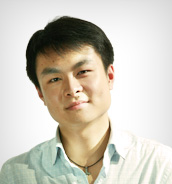A History of Christmas
Christmas is the most cheerful and holy of holidays in the Christian world, which boasts of an estimated 1.8 billion people. Although the origin of this holiday was purely religious, it has evolved into a highly secular(长期的,世俗的) celebration each year. However, strong religious components are still conveyed in various ways each year. The two are intrinsically(本质上的,完全的) mixed in the midst of modern commercialism(商业主义) and attached to. Christmas day fall on December 25th each year, celebrating the birth of Jesus Christ, the son of a carpenter living over two thousand years ago. Christianity(基督教), the movement following the teachings of Christ, roused the world over the next many centuries. It is said that the first celebration of Christmas took place in 336 A.D. in Ancient Rome. No one seems to know for sure if December 25th was actually the date of Christ’s birth, but it is possible that Christian leaders in Ancient Rome wanted to replace pagan(异教的) religious holidays that occurred around the same time. Many secular symbols of Christmas have emerged over several centuries. Santa Claus, in his present form, is a fairly recent development whereas his origin, in part, goes back to Roman times. St. Nicholas was an early Christian Bishop (主教) of Patara of the Lycian seaport (in present-day Turkey) in the 4th century A.D. The Roman Emperor Diocletian, who persecuted Christians, imprisoned(监禁,关押) him because the practice of Christianity was illegal. The first Christian Emperor of Rome, Constantine, later released him. Nicholas’ reputation for generosity(慷慨,大方), kindness and miracles earned him a widespread reputation and eventually sainthood(圣徒). He is said to have brought back life to the children who had been chopped into pieces by their butcher father. He is reputed to have placed some gold coins in stockings, hung by a fire to dry by three poor girls. He had hoped that the girls would be able to use the money to marry to avoid living on prostitution(卖淫), the common destiny(命运) of such girls at that time. From this gesture came the tradition of empty oversize(特大的) stockings hanging on fireplaces at Christmas time for Santa to fill with little gifts. From these roots, the present-day Santa Claus seems to have emerged. In some European countries, the image of Father Christmas is identified more closely with Saint Nicholas than with Santa Claus. The red and white suit, that Santa wears, is said to have come from the traditional color of early Christian Bishops’ robes. Santa, flying in a sleigh(雪橇) pulled by reindeer(驯鹿), and going down chimneys, originated(起源) from an American poem written in the 1820’s, another American made an engraving(雕刻术) called “Santa’s Workshop” in which Santa, is portrayed(描绘,描写) in a lovely sunset, scratching his chin, reading letters and checking a list activities which was revived(复苏,苏醒) every year in music and stories told to children during the yuletide(圣诞季节) (Christmas) season. Every year children write letters to Santa Claus before Christmas, asking him to bring favorite toys. Santa traditionally navigates(航海) the frosty night skies December 24th without using a compass or a chart to plot his course. He, in his sleigh pulled by nine reindeer, usually lands on slippery sloped roofs. Clumsily(笨拙的), with his big bag heaped with toys and slung(用带吊挂) over his shoulder, he jumps down chimney and dumps toys under Christmas trees. Gifts often include a doll for a little girl or a train for a little boy. He does all of this without disturbing the inhabitants. Santa then crawls vertically back up the chimneys and, without a trace, flies off, exclaiming the resounding phrase, “Merry Christmas to all, good night”. He is back at his home at the North Pole before dawn on Christmas morning, tired but very happy after his very speedy sweep around the world. After a big yawn, Santa falls asleep. Christmas carols(圣诞颂歌), or Christmas religious songs, began in the middle Ages when people danced and sang religious songs on village greens (central gathering areas in small towns and villages) in Anglo-Saxon England. A Christmas carol today is a religious tune without the dance associated with it. A strong religious tradition today, as in other times, is to go to church at midnight of Christmas Eve or on Christmas morning. A priest may say mass (in a Catholic[天主教的] Church) or preach(宣讲教义) a sermon(布道) about the significance of the birth of Christ. Another very prominent symbol of Christmas is the Christmas tree. There are several explanations for its origin. One story suggests that Martin Luther was walking through a wood on a clear winter night admiring the beauty of the bright stars glowing through the branches of trees. He decided to cut down a small evergreen tree and take it home. He put candles in it to represent the stars he had seen earlier because he wanted to share that beautiful image with his family. Another story tells of the bringing of an evergreen tree inside the home during winter solstice(至日,至点) (December 21st) symbolizing the renewal(复活,复兴) of life in the dead of winter. It became associated with Christmas, which occurs only four days later. The Christmas tree was firmly established as a Christmas symbol by the Germans who eventually brought it to America. In Victorian England, people hung cakes and candies on it and later, fruit made of paper adorned(装饰) the branches. Modern commercial tree decorations appeared in the 1880’s at Woolworth’s Department Store in the United States, and electric Christmas tree lights made their debut(初次登场) in 1882. The first Christmas cards were sent in the 1840’s in both England and America. Gift giving probably stems from the Bible where it is written that three kings, bearing gifts from the Orient(东方), visited Bethlehem when Jesus was born. We know that St. Nicholas also gave gifts. A later tradition developed, whereby gifts were given on each of the twelve days of Christmas, from December 25th, when Jesus allegedly(据说,传说) was born, to January 6th, when Jesus was apparently baptized(洗涤,实行浸礼) (the Epiphany). There is a popular song called the “Twelve Days of Christmas” that keeps this tradition alive each year.
相关推荐:
高手点拨:如何对付鸡肋般的四级词汇题 2010年12月英语四六级备考指导:阅读逻辑词汇 













